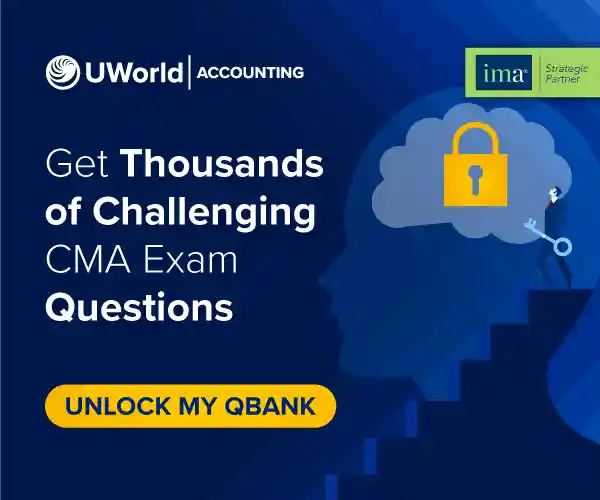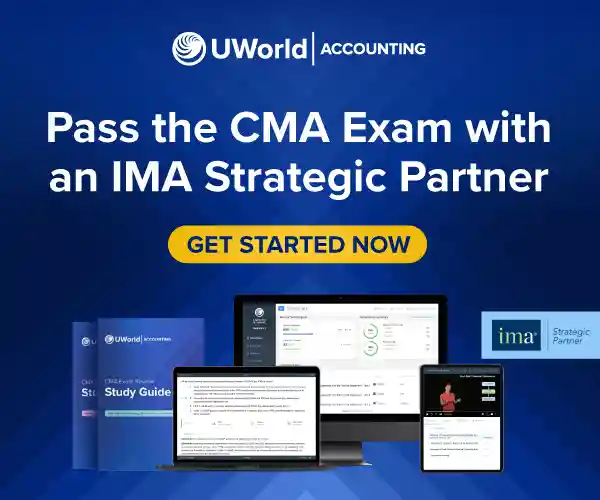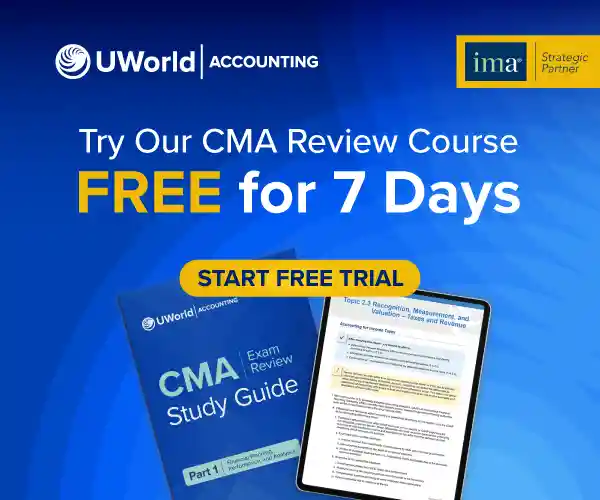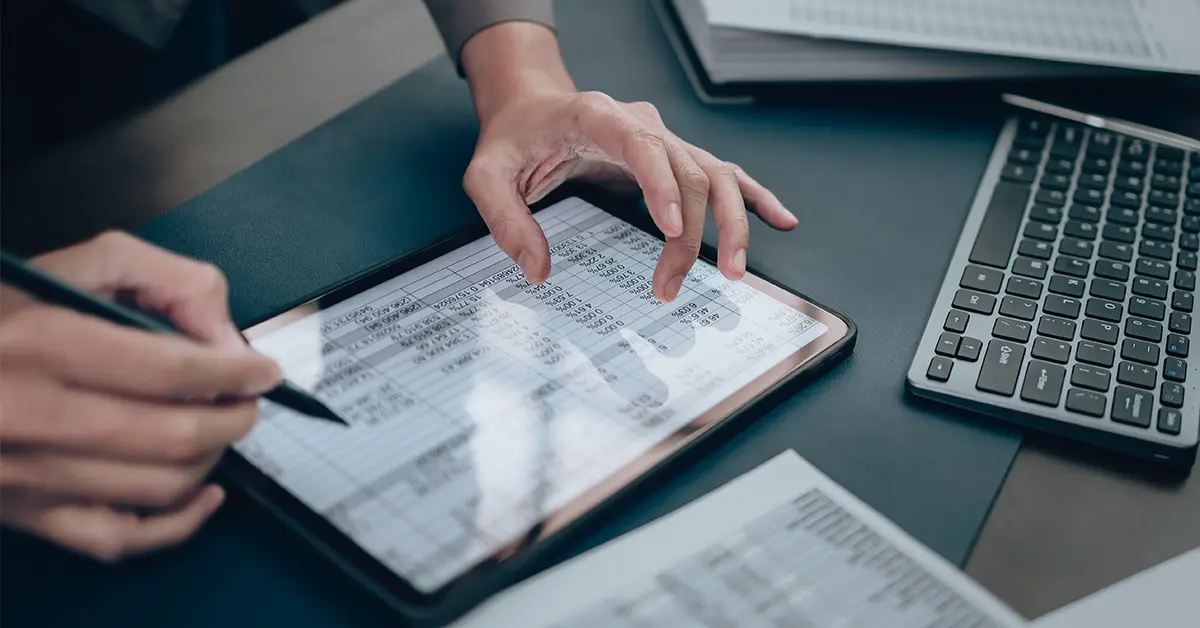You’ve decided to take the Certified Management Accountant (CMA®) exam. There are many review course options available. Here’s how to decide which is right for you and your learning preferences.
Research shows we don’t actually learn best through just 1 fixed method. Most people are multimodal learners, meaning they benefit from various study approaches depending on the topic and situation.1 That’s where learning preferences come in. Maybe you like reading first, watching a video second, and then talking it out with someone — and that’s completely valid.2
Here are some of the most recognizable types of learning preferences and study tips for each, so you can better choose CMA study materials that support your personal study needs.
Visual Learning
If you like to “see” the big picture, visual learning might be your preferred approach. You may find that images, diagrams, and color-coded notes help you break down complex ideas and connect concepts more clearly.3 Tools such as flowcharts, annotated graphs, and visual summaries can make all the difference.
Visual Learning Study Tip: Choose CMA test prep materials that incorporate detailed visuals. For example, UWorld’s CMA review courses include color-coded study guides, concept diagrams, and visual aids within QBank explanations to help you grasp key topics faster.
Learn more about how our CMA courses compare to other providers.
Auditory Learning
If you retain information best by hearing it, you might lean toward an auditory learning preference. Listening to lectures, participating in discussions, and even reading your notes out loud can help you process and remember new material more effectively.4
Auditory Learning Study Tip: Attend live CMA review sessions, watch video lectures, and listen to audio recordings of key concepts. UWorld’s CMA review courses include expert-led video lectures and live online boot camps — perfect for reinforcing material through spoken explanations and active discussion.
Kinesthetic (Tactile) Learning
If you learn best by doing — through movement, hands-on activities, and real-world application — you might be a kinesthetic learner. Sitting still for long periods probably makes it harder to focus, and you might find that physically engaging with the material helps things click.5
Kinesthetic Learning Study Tip: Try studying in short, focused bursts and take movement breaks in between — walk, stretch, or switch tasks to keep your energy up. With UWorld’s customizable quizzes, mock exams, and interactive QBank, you can practice applying concepts actively instead of passively reviewing them.
Reading & Writing Learning
If reading and writing are your go-to ways to learn, you probably like taking detailed notes, writing summaries, or making flashcards. You feel most comfortable engaging with content through written words — absorbing and producing them.6
Reading and Writing Learning Study Tip: Choose CMA prep materials that give you plenty of space for notes and allow you to write things out in your own words. UWorld’s CMA review courses include eBooks, a built-in digital notebook, and customizable flashcards. These are perfect tools to support your learning style through reflection and repetition.
Preparing for CMA Exam Success With the Right Study Materials
When it comes to choosing your CMA study resources, lean into your learning preferences — or better yet, mix it up. The most effective prep often blends visual, auditory, and hands-on strategies. Look for materials that trusted accounting experts regularly update. Take advantage of a free trial to test resources out. Ask other CMA candidates what they highly recommend.
And make sure to check whether the prep provider you choose is an official partner of Institute of Management Accountants (IMA®). UWorld Accounting is a proud strategic partner of IMA.
Our CMA review courses are built to support every type of learner with updated materials, expert-led instruction, and a proven active learning approach. From engaging video lectures and detailed study guides to customizable flashcards, practice questions, and full-length mock exams, everything is designed to help you study smarter — and pass faster.
References
- Education Next. (2021, Spring). The stubborn myth of “learning styles”: State teacher license prep materials cling to a debunked theory. https://www.educationnext.org/stubborn-myth-learning-styles-state-teacher-license-prep-materials-debunked-theory/
- Gottler, A. (2019, July 10). Learning preferences, not learning styles. Amy Gottler Instructional Design. https://amygottler.co.uk/instructional-design/learning-preferences-not-learning-styles/
- University of the Potomac. (2021, July 6). What are the characteristics of visual learners? https://potomac.edu/characteristics-of-visual-learners/
- Listening.com. (2023, February 15). What is an auditory learner? Definition, characteristics & study tips. https://www.listening.com/blog/auditory-learners
- University of Arkansas. (n.d.). Learning styles characteristics. Student Success. https://success.uark.edu/get-help/student-resources/learning-styles-characteristics.php
- Bay Atlantic University. (2022, August 3). What is a read/write learner? https://bau.edu/blog/read-and-write-learners/








